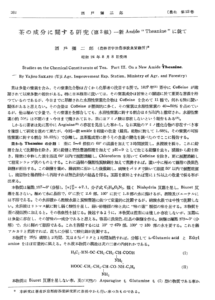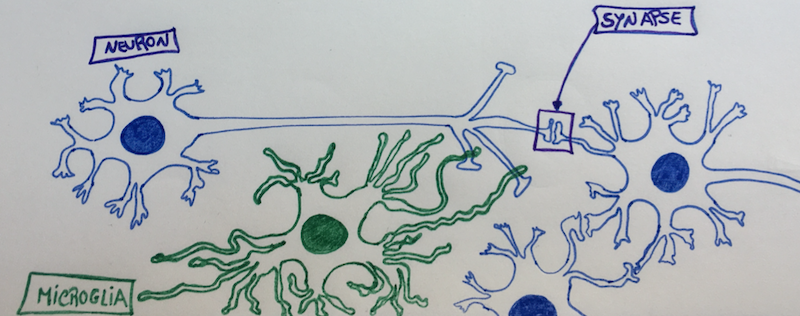Theanine was discovered in 1949 by the Japanese researcher Yajiro Sakato1, as a new amide in the water extract of the Japanese green tea Gyokuro (玉 露) – also called “precious dew” due to its dark green colour and high price in Japanese markets, because of its unique characteristic taste of sweetness and “umami”2.
The green tea leaves from specialized varieties of the tea plant Camellia sinensis (Ericales plants) have enormous amounts of theanine, which they absorb from the roots of the plant depending on the nitrogen supply of the soil3, 4. A soil that is rich in nitrogen will promote the biosynthesis of the non-protein aminoacid L-Theanine from Glutamic Acid and Ethylamine (by the enzyme theanine synthetase)2. Since the commercial price of green tea is almost directly proportional to its theanine content, to obtain theanine-rich, good quality green tea leaves, a large amount of nitrogen fertilizer must be supplied to the cultivated plants throughout the growth period (with problematic effects on the environment)2.
Theanine is then transported via the xylem fluid, from the roots to the young bushes leaves. And, because light is necessary to the conversion of theanine into cathechins in the leaves of the plant, when Camellia sinensis bushes are protected from direct sunlight for a couple of weeks just before harvest, they have a high theanineamino acid content2. Even though cathechins are polyphenols with known antioxidant properties, they are also responsible for the astringent flavour of green tea. So, for an optimum taste, cathechins must be balanced with theanines. With less sunlight, there is less photosynthesis and leaf senescence; and, less theanine being converted into catechin, keeping the unique sweet-umami flavor characteristic of Gyokuro green tea.
Theanine is also known as N5-ethyl-L-glutamine due to its structural similarities to L-glutamic acid, which is the most abundant excitatory neurotransmitter in our brains5. Researchers think that L-theanine mechanism of action might be mediated by glutamate receptors, and it might act as a partial agonist for the N-methyl-D-aspartate receptor6.
Theanine has known relaxing and anxiolytic effects, via the induction of the slow alpha-brain waves in the occipital and parietal regions of the human brain7. Plus, it doesn’t have any additive or side effects that are usually associated with conventional sleep inducers.
There is only one IF….
In addition to L-Theanine, Camellia sinensis leaves grown in the shade also have a high level of caffeine8, which decreases slow brain activity and keeps us awake (by increasing beta-wave activity). This because, the buds and young leaves of Camellia plants contain more caffeine than mature leaves8. As such, besides a high level of theanine, Gyokuro or Matcha green tea powder (which goes through the same shade process before harvest), also have high levels of caffeine.
What is interesting, is that this dual effect of L-Theanine and Caffeine in Gyokuro or Matcha green tea powder, seem to have a synergistic effect in decreasing mind wandering and enhancing our attention to target stimuli9, 10. This was shown in a very small randomized clinical trial, that used functional Magnetic Resonance Imaging (fMRI) to scan the brains of subjects, after they ingested L-Theanine and Caffeine supplements while performing a visual task.
So, if we want to focus and stay awake: a cup of Gyokuro or Matcha, will keep our attention sharp as a Japanese sword.
If, on the other hand, we are not feeling very calm, anxiety is setting in, or if sleep is taking too long because the news are only “so-so” at the moment: 200-400mg of L-theanine could help us keep the zen mood, and have a good night sleep11.

References:
1. Sakato Y. Studies on the Chemical Constituents of Tea
Part III. On a New Amide <b>Theanine</b>. Nippon Nōgeikagaku Kaishi. 1950;23:262-267.
2. Ashihara H. Occurrence, biosynthesis and metabolism of theanine (γ-glutamyl-L-ethylamide) in plants: a comprehensive review. Nat Prod Commun. 2015;10:803-10.
3. Ruan J, Haerdter R and Gerendás J. Impact of nitrogen supply on carbon/nitrogen allocation: a case study on amino acids and catechins in green tea [Camellia sinensis (L.) O. Kuntze] plants. Plant Biol (Stuttg). 2010;12:724-34.
4. Huang H, Yao Q, Xia E and Gao L. Metabolomics and Transcriptomics Analyses Reveal Nitrogen Influences on the Accumulation of Flavonoids and Amino Acids in Young Shoots of Tea Plant ( Camellia sinensis L.) Associated with Tea Flavor. J Agric Food Chem. 2018;66:9828-9838.
5. Unno K, Furushima D, Hamamoto S, Iguchi K, Yamada H, Morita A, Horie H and Nakamura Y. Stress-Reducing Function of Matcha Green Tea in Animal Experiments and Clinical Trials. Nutrients. 2018;10:1468.
6. Sebih F, Rousset M, Bellahouel S, Rolland M, de Jesus Ferreira MC, Guiramand J, Cohen-Solal C, Barbanel G, Cens T, Abouazza M, Tassou A, Gratuze M, Meusnier C, Charnet P, Vignes M and Rolland V. Characterization of l-Theanine Excitatory Actions on Hippocampal Neurons: Toward the Generation of Novel N-Methyl-d-aspartate Receptor Modulators Based on Its Backbone. ACS Chem Neurosci. 2017;8:1724-1734.
7. Kobayashi K, Nagato Y, Aoi N, Juneja LR, Kim M, Yamamoto T and Sugimoto S. Effects of L-Theanine on the Release of α-Brain Waves in Human Volunteers. Nippon Nōgeikagaku Kaishi. 1998;72:153-157.
8. Ashihara H and Suzuki T. Distribution and biosynthesis of caffeine in plants. Front Biosci. 2004;9:1864-76.
9. Kahathuduwa CN, Dhanasekara CS, Chin SH, Davis T, Weerasinghe VS, Dassanayake TL and Binks M. l-Theanine and caffeine improve target-specific attention to visual stimuli by decreasing mind wandering: a human functional magnetic resonance imaging study. Nutr Res. 2018;49:67-78.
10. Hidese S, Ogawa S, Ota M, Ishida I, Yasukawa Z, Ozeki M and Kunugi H. Effects of L-Theanine Administration on Stress-Related Symptoms and Cognitive Functions in Healthy Adults: A Randomized Controlled Trial. Nutrients. 2019;11:2362.
11. Williams JL, Everett JM, D’Cunha NM, Sergi D, Georgousopoulou EN, Keegan RJ, McKune AJ, Mellor DD, Anstice N and Naumovski N. The Effects of Green Tea Amino Acid L-Theanine Consumption on the Ability to Manage Stress and Anxiety Levels: a Systematic Review. Plant Foods Hum Nutr. 2020;75:12-23.

